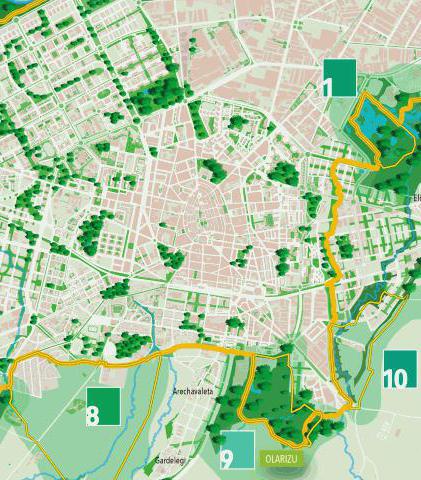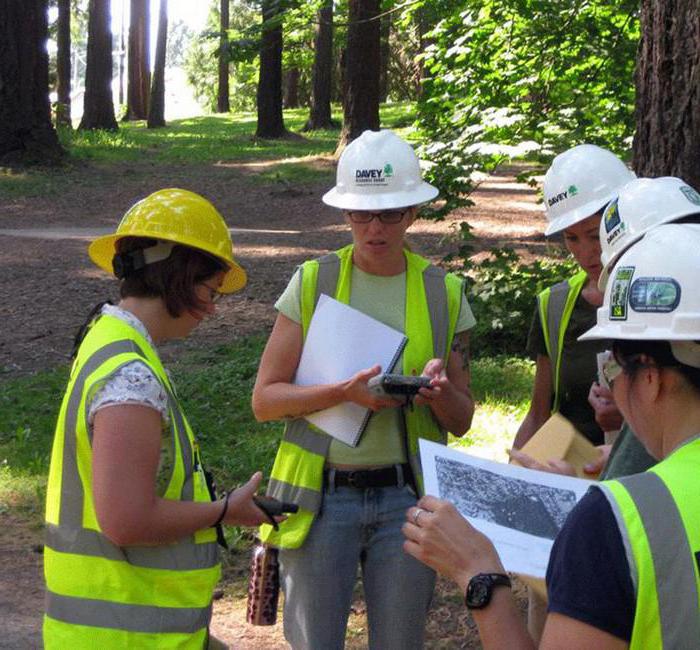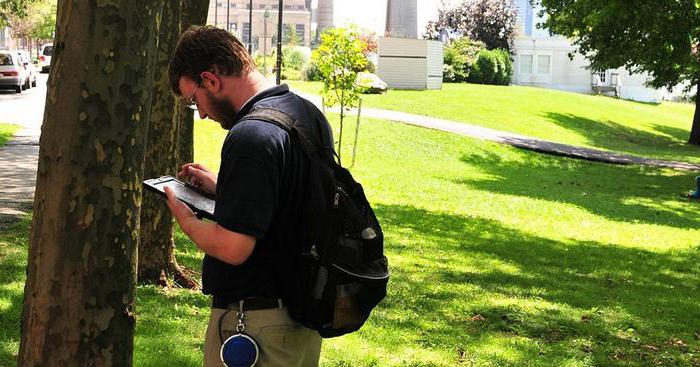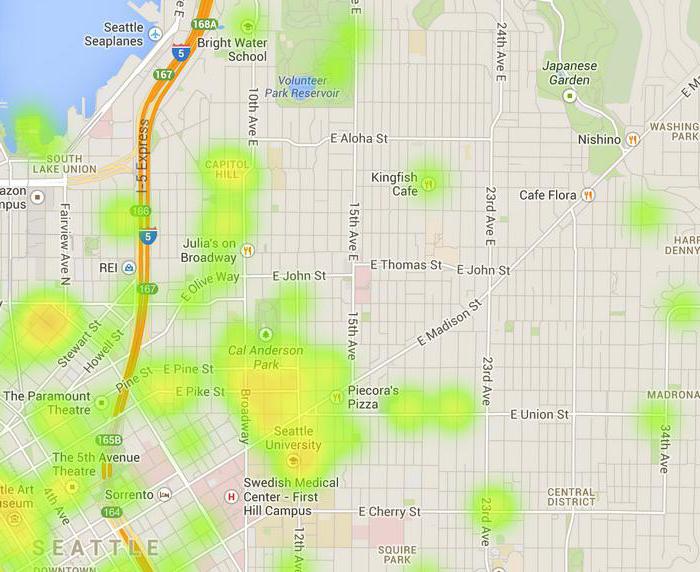Gardening involves various activities. An integral part of this activity is the accounting and inventory of green spaces. Consider these procedures in more detail. 
General information
An inventory of green spaces is necessary to obtain reliable information about the amount of work to care for crops, structures and buildings. Information obtained during this procedure is used in compiling statements on the overhaul and maintenance of various garden and park elements. An inventory of green spaces in Moscow is also carried out when determining mass and local events aimed at combating pests and diseases of cultivated plants. In the course of the activity, a person is approved who is responsible for the current state and safety of landscape gardening elements.
Goals
An inventory of plantings at the landscaping facility is necessary for:
- Making decisions on the inclusion of landscape gardening elements in the list of common areas, adjusting the information in it in terms of areas or borders, excluding plots from it.
- Preparation of statements and certification.

Registration of green spaces is carried out for:
- Ensuring the right of the population to receive reliable information about the state of the environment and the conditions, boundaries and locations of landscape gardens.
- Effective organization of site management.
- Determining the conformity of the quality parameters of plantations and indicators of their provision of terrain to established standards.
- Formation and provision of reliable and comparable information about property owned by the municipality.
- The collection of data necessary to calculate the replacement cost of plantings, the amount of compensatory landscaping.
Key indicators
An inventory of urban green spaces allows you to set such parameters as:
- The total area, the balance of the plots on which the various elements are located. The latter, in particular, include trees, flower beds, shrubs, lawns, platforms and paths. Structures and buildings, pools, ponds, stationary equipment and so on are also taken into account.
- The species and species composition of shrubs and trees, their age, number, trunk diameter at a height of 1.3 meters, condition.
- Preservation and belonging of stationary landscape gardening equipment, engineering and architectural structures, structures and buildings for economic purposes, engineering communication networks (ground or underground), their number.

Description of the inventory of urban green spaces
Activities are carried out in accordance with the instructions. The most suitable time for performing the necessary procedures are autumn and spring. Territory analysis using existing geodetic sub-bases and drawings is carried out in two stages. The first is field. At the second stage, desk processing of the material is performed. Depending on the size of the territory and the presence of cultivated plants, a methodology for inventorying green spaces is chosen. It can be:
- Group way. Activities are carried out by a special detachment using landscape, forestry, taxation techniques.
- Individual way. An inventory of green spaces is carried out by applying a wireline survey to the plan for small areas.
In the latter case, the executor is BTI.At the same time, landscapers are involved. The latter are involved in determining the species, age, species of shrubs and trees, and examining their condition.
Documentation
An inventory of green spaces in a rural settlement or in another territory involves the preparation of the necessary drawings and passports of the landscape gardening element. In the latter, in the future, all changes that take place in it for certain time periods are recorded. In addition, a table of summary information about stands on the territory is being developed. For each landscape gardening element should be composed:
- Inventory plan. Its scale depends on the area of the site.
- Passport of landscape gardening element.

Field work
To perform them with geodetic materials obtained during horizontal shooting, make a copy of the plan. The coordinate grid, polygonometric signs, marks, leveling marks are not applied to it. The copy is compared with the nature, the refinement of the red lines (borders) and the situational plan. After that, the line of sighting lines through the survey sites is planned. It can go either independently, or coincide with roads, ditches, glades. In any case, the route should be tied to the district border of the territory. Lines viziers the whole territory is divided into sections. In forestry, they are referred to as stands.
How to take an inventory of green spaces?
When using the individual method for convenience, the survey area is divided into conditional sections. They are limited by a road-path net or other constant contours. Plots are affixed serial numbers. The procedure for conducting an inventory of green spaces involves applying all the bushes and trees to the plan using a grid. They are shown on a conventional plot by breed.
Plant groups
An inventory of green spaces in the city is carried out with entries in the work diary:
- The first group. Records are made on trees located on driveways. The diary includes information about the type of planting (group / generic), number, breed, diameter, age, and form of crowns.
- The second group. Information is recorded on trees located on boulevards, in squares and gardens. The same data as above is entered, except for numbers.
- The third group. Information is summarized by trees located in areas of forest parks and parks. The diary records the type of plantings, the number of plants per 1 ha, the state, the prevailing species composition, and condition.
- The fourth group. An inventory of shrub type green spaces is being carried out. The type of planting (group / alley), breed, condition, length, number of bushes are recorded in the diary.
Registration of flower beds and lawns is carried out by area, and perennial, in addition, by the number of bushes on the site. 
Three-point rating system
An inventory of green spaces includes an analysis of the state of the plants. The following indicators are used:
- Good condition. The plants are healthy, have a well-developed and regular crown, no significant damage. Among the shrubs there is no overgrowth. Grass is developed on lawns; there are no wilted plants or their parts in flower beds.
- Satisfactory condition. The plants are healthy, but the crown is not properly developed. There are no weeds in the bushes, but overgrowth is present. On plants, significant but not endangering their life burns and injuries are noted. The lawn is poorly groomed, oppressed grass. In the flower beds there are wilted plants and their parts.
- The condition is unsatisfactory. The crown of the trees is irregular and poorly developed, significant wounds and injuries are present. Plants are infected with diseases and pests that endanger their lives. In the bushes there is a shoot, dead parts. In lawns, grass is rare and endangered. In the flower beds there are many wilted plants, fallen flowers.
Planning
The subtree inventory of green spaces involves pegging. It is carried out by the method of notches. Borders and sights are measured, an outline is made with digital and graphic marks. In the inventory plan based on the materials received indicate:
- Exterior red lines with linear dimensions.
- The situation is beyond borders.
- Lines and parcel numbers.
- Especially valuable historical or unique tree species. They are indicated by separate numbers in red throughout the territory.
- All shrubs, trees, lawns and flower beds, group plantings.

Internal Surveys
An inventory of green spaces on alleys, streets, embankments, squares is carried out using graphic materials summarizing the information of road and bridge structures, indicating only facade lines and adjacent trees, buildings, sidewalks, shrubs, lawns, flower beds. Therefore, in the plan of plants, they show the number of each plot, designate each tree within it. After the computational (determining the area of the territory) and graphic work are completed, the passport is filled. It contains all the indicators obtained for trees, shrubs, and finally - for lawns and flower beds. Information on plants located on the odd and even sides of the streets is recorded separately. An inventory of green spaces is carried out every 5 liters. Activities are carried out to identify changes in the internal situation that are reflected in the plan and in the passport.
BTI
The Bureau of Technical Inventory compiles summary information on landscaping sites. They reflect the number of territories, their area. The documentation identifies plots for plants, as well as structures, stationary equipment, water bodies. Aggregate information allows you to assess the level of landscaping for a specific (current) period, makes it possible to form the basis for the subsequent planning of operating costs for the maintenance of plantings, expenses for the repair and construction of landscape gardening elements.
Plant condition monitoring
It is systematic. As part of the control, a partial, quarterly, general inspection is carried out. Extraordinary or extraordinary examinations may also be conducted. During the general inspection, all garden and park elements are examined. This study is performed twice a year - in autumn and spring. During a quarterly or partial inspection, the state of the facility (its part) is determined to evaluate the operation of operational services. Based on the data obtained, tasks are set to improve their performance. The need for an extraordinary or emergency inspection is caused by abrupt changes in operating conditions due to natural disasters or for technical reasons. 
Plant classes
They are installed depending on the purpose of the plantings, the location among the buildings, the intensity of care. The following classes exist:
- The first. It includes plants of urban importance, with historical and artistic value, located in the most critical places. The first class is possessed by frequently visited gardens, squares, parks, plots near historical structures and buildings. The key city highways belong to the same category: streets, boulevards, avenues.
- Second. They have territories of regional importance. These include driveways, boulevards, roads, streets, squares, gardens, parks.
- Third. It is assigned to local stands. These include squares, boulevards, gardens, driveways and streets, intra-quarter plots and landscape gardening elements of neighborhoods.
- Fourth. It is assigned to plantings of historical landscape parks, departments, preschool and school institutions, hospitals.
- Fifth. This class is assigned to forests and forest parks located within the city limits and suburban areas.
Responsible persons
For the maintenance and preservation of plantations, their owners are responsible:
- In gardens, parks, forest parks, on boulevards and other public areas - the leadership of district or city enterprises of landscape gardening.
- On the streets in front of the houses to the carriageways, in residential neighborhoods, in the gardens - the administration of housing and communal services.
- In the territories of industrial enterprises, in the sanitary protection zones and areas adjacent to them, are the leaders of these organizations.
- On the sites allotted for the implementation of construction, from the date of its commencement - customers.
The preservation of urban or urban green spaces is monitored by landscape gardening and its services. Supervision of compliance with plant maintenance rules is carried out by an inspector or inspection department.
Conclusion
Today, it is impossible for any settlement to exist without green spaces. The main landscape gardening elements are squares, parks and others. They are planned immediately during the design of each territory. At the same time, the current landscaping standards are taken into account. For each territory they are different. For example, for large cities, the norm is 10 square meters. m. per inhabitant. Such an area of plants allows us to solve urgent problems for improving the environment. The most acute problems are, in particular, the problems of purifying air from harmful impurities and emissions, and reducing the noise impact on the nervous system of citizens. In this regard, the ecological importance of green spaces in human settlements is constantly increasing. The role of plants in the field of public health is increasing. Therefore, it is extremely important to ensure their safety, proper care for them, and to carry out their accounting and inventory on time.
